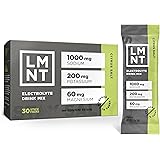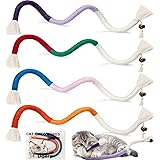The Hidden Trap That Halts Investors at 10 Properties—And the System That Shatters Every Limit You Thought Existed
Ever find yourself daydreaming about owning a handful of rental properties, picturing those sweet cash flows rolling in, and suddenly—bam!—you’re buried under a mountain of maintenance calls, lease renewals, and inbox chaos before you even hit double digits? Welcome to the notorious “2-to-20 door trap,” where the thrill of growth quickly crashes into operational chaos. It’s the classic “work harder, not smarter” trap nearly every real estate investor stumbles into. But here’s the kicker—scaling your portfolio isn’t about hustling nonstop; it’s about building rock-solid systems that keep your properties—and sanity—in check. Curious how Fortune 500 companies’ old-school wisdom on processes can revolutionize your real estate game? Let’s dive into why most investors hit a wall before 10 properties and how mastering systems lets you break through that ceiling with ease. LEARN MORE
Picture this: You just closed on your second rental property. The cash flow projections look amazing. You’re already daydreaming about property number three, maybe even 10. Financial freedom feels within reach.
Fast-forward 18 months. You own eight doors, but you’re drowning.
Your phone buzzes at 7 a.m. with a maintenance emergency. By 9 a.m., you’re juggling lease renewal paperwork for three different tenants. Your inbox is a disaster zone of contractor quotes, insurance updates, and rental applications that still need screening. You haven’t updated your spreadsheet in two weeks, so you’re not even sure which properties are cash flowing anymore.
This is the 2-to-20 door trap. The excitement of scaling your portfolio quickly turns into operational chaos. Most investors hit this wall somewhere between five and 10 properties, when the systems that worked for two units completely break down.
You start working harder, not smarter. More phone calls. Longer hours. More stress. But here’s the uncomfortable truth: Hustle won’t save you from bad systems.
The investors who successfully scale to 20, 50, or even 100 doors don’t just work harder. They work systematically. They’ve learned what Fortune 500 companies figured out decades ago: Sustainable growth requires predictable, repeatable processes.
The question isn’t whether you can handle more properties. It’s whether your systems can.
The Hidden Cost of Growing Without Systems
When investors scale without systems, the breakdown follows a predictable pattern. It starts with the small stuff and cascades into bigger problems faster than you’d expect.
First to fail: Communication
You forget to follow up with a contractor. A tenant’s repair request gets buried in your email. You promise to send a lease renewal by Friday and completely space out on it. What used to be simple conversations become missed deadlines and frustrated people.
Next: Documentation
Your expense tracking gets sloppy. You can’t find that receipt from six months ago. Property files become scattered across your desk, computer, and phone. Tax season becomes a nightmare of re-creating records that should have been organized all along.
Then: Response times
It takes you three days to return a tenant’s call instead of three hours. Maintenance requests pile up because you’re overwhelmed sorting through which are urgent versus routine. Your reputation starts taking hits, and good tenants begin considering other options.
Here’s where it gets expensive: The stress tax hits hard.
Burnout leads to poor decision-making. You hire the first contractor who calls back, instead of getting three quotes. You accept mediocre tenants because you’re tired of showing the property. Small mistakes compound into big financial hits.
Tenant satisfaction drops when you’re constantly in reactive mode. Good tenants expect responsiveness and professionalism. When your systems fail, they notice. Higher turnover means more vacancy costs, advertising expenses, and time spent screening replacements.
This is why most investors plateau between five and 10 properties. It’s not a skill problem or a capital problem. It’s a systems problem. The operational load becomes unsustainable without structured processes to handle the complexity.
The investors who break through this ceiling don’t have superhuman energy. They have something better: predictable systems that work, whether they’re managing two properties or 20.
What Manufacturing Taught Us About Scalable Operations
In the 1950s, Toyota had a problem: It was competing against massive American automakers with deeper pockets and established production lines. Traditional manufacturing wisdom said you needed bigger factories, more workers, and higher volume to stay competitive.
Toyota went the opposite direction. Instead of scaling through brute force, they focused on eliminating waste and standardizing processes. They developed the Toyota Production System, which became the foundation of lean manufacturing principles that transformed industries worldwide.
The core insight was revolutionary: Sustainable growth comes from systematic efficiency, not just working harder or throwing more resources at problems. Toyota identified seven types of waste in production: overproduction, waiting, transportation, overprocessing, inventory, motion, and defects. By systematically eliminating these inefficiencies, they could outperform competitors while using fewer resources.
The principles were simple but powerful:
- Standardize successful processes so they can be replicated consistently.
- Continuously improve by identifying and solving small problems before they become big ones.
- Empower workers with clear systems that reduce decision fatigue and human error.
This systematic approach didn’t just work for car manufacturing. Companies across industries began adopting lean principles. Tech companies use them for software development. Hospitals apply them to patient care. Service businesses implement them for customer operations.
The same principles that revolutionized manufacturing can transform real estate portfolio management. The fundamental challenge is identical: How do you maintain quality and efficiency as you scale operations?
Most real estate investors operate like pre-Toyota manufacturers. They handle each property individually, reinvent processes for every situation, and scale by working harder rather than smarter.
But the investors who successfully grow large portfolios think differently. They treat their properties like a production system, with standardized processes, continuous improvement, and systematic waste elimination.
The Real Estate Systems Framework
When you apply systematic thinking to real estate portfolios, the bottlenecks become obvious. Most investors get stuck in the same predictable places, but once you identify these choke points, you can engineer solutions that scale.
The communication bottleneck hits first. Without standardized processes, every tenant interaction becomes a unique conversation. You’re constantly deciding how to respond to maintenance requests, what information to include in lease renewals, and how to handle late rent notices. This decision fatigue burns mental energy that should be focused on growth.
Smart investors solve this with template-driven communication. Standard maintenance request forms capture all necessary details. Automated lease renewal remind tenants with clear timelines. Late rent protocols trigger specific actions on specific days. When communication becomes systematic, response times improve, and nothing falls through the cracks.
The documentation bottleneck kills efficiency next. Files scattered across email, computer folders, and physical papers create massive time waste. Looking for a contractor’s insurance certificate or last year’s property tax statement shouldn’t take 20 minutes of searching.
Centralized digital filing systems eliminate this waste entirely. Every property gets a standardized folder structure. Documents get named consistently. Important information becomes searchable and accessible from anywhere. The time savings compound quickly when you’re managing multiple properties.
The maintenance coordination bottleneck creates the biggest headaches. Without systematic vendor management, you’re constantly starting from scratch—researching contractors, checking references, negotiating prices, and coordinating schedules for every single issue.
Systematic investors build vendor networks with standardized processes. Preapproved contractors can handle common issues. Standard pricing agreements are for routine maintenance. Clear escalation protocols are for emergencies. Scheduled preventive maintenance catches problems before they become costly repairs.
The magic happens when these systems integrate. A maintenance request triggers automatic vendor coordination. Completed work updates the property file. Expenses flow directly to accounting systems. What used to require hours of manual coordination becomes a predictable, scalable process.
From Reactive to Proactive: Building Your Operating System
The difference between struggling investors and successful ones isn’t talent or luck. It’s operating mode.
Struggling investors live in firefighting mode. Every day brings new emergencies that demand immediate attention. Successful investors operate proactively, where most issues are anticipated and handled before they become urgent.
Building a proactive operating system starts with predictable maintenance schedules. Instead of waiting for the HVAC to break during a heat wave, systematic investors service units annually. Rather than discovering roof leaks during storms, they inspect gutters each spring. Preventive maintenance costs less and eliminates most emergency calls.
Standardized lease renewal processes prevent vacancy surprises. Sixty days before expiration, tenants receive renewal notices with clear terms and deadlines. Thirty days out, nonresponders get follow-up calls. Two weeks before expiration, you already know who’s staying and who’s leaving—no scrambling to fill unexpected vacancies.
Financial tracking becomes automated instead of reactive. Monthly rent collection follows standard procedures. Expense categorization happens immediately, not during tax season. Property performance gets reviewed quarterly using consistent metrics. You always know which properties perform well and which need attention.
The compound effect of these small improvements creates dramatic results. Each systematic process reduces decision fatigue and human error. Every standardized procedure frees mental energy for higher-value activities like deal analysis and portfolio strategy.
Most importantly, systematic operations become location-independent and scalable. Your processes work whether you manage five properties or 50—whether you’re in town or traveling, or whether you handle operations personally or delegate to team members.
This is how investors break through the 10-property ceiling and build portfolios that generate wealth without consuming their lives.
Systematic Real Estate Development with Invest 5S
While most investors struggle to scale their own portfolios systematically, some have discovered an alternative approach: partnering with developers who’ve already mastered systematic real estate operations.
This is exactly what Invest 5S has built over the past three decades. Founded by Clay Schlinke with over 30 years of industry experience, this family-owned Texas-based company has developed a vertically integrated system that controls every aspect of real estate development, from land acquisition to ongoing management.
Their systematic approach eliminates the exact bottlenecks we’ve discussed. Instead of coordinating with multiple third parties, Invest 5S handles everything in-house. Land acquisition, development, construction, sales, and ongoing management all flow through integrated processes that have been refined over thousands of projects.
The numbers speak to their systematic efficiency. Invest 5S has built over 4,000 units across Texas markets and developed more than 4,000 lots. They currently construct approximately 500 units annually, demonstrating the scalable systems that many individual investors struggle to achieve.
Here’s what makes their approach particularly systematic: They focus exclusively on duplex and fourplex properties in high-growth Texas markets. Rather than chasing every opportunity, they’ve standardized around property types and locations where their systems deliver predictable results. San Antonio, Dallas/Ft. Worth, and Rio Grande Valley markets provide consistent demand, driven by job growth and population expansion.
For investors, Invest 5S offers a systematic solution to real estate exposure without operational headaches. Their passive investment opportunities typically require minimum investments around $50,000, with hold periods of two to three years. Investors benefit from cash flow generation, appreciation potential, and substantial tax advantages through new construction depreciation.
Most importantly, their systematic approach eliminates the scaling problems that trap individual investors. No maintenance calls, no tenant management, no vendor coordination. Your capital works within their proven system while you focus on your primary career and family obligations.
This is systematic real estate development designed specifically for busy professionals who want real estate returns without the operational complexity of direct ownership.
Your Next Step
Whether you’re building your own systematic portfolio or exploring passive investment opportunities, the key is taking action on systematic principles rather than continuing to scale through hustle alone.
If you’re an investor interested in systematic real estate development without operational headaches, explore what Invest 5S has built. Their three-decade track record and vertically integrated approach offer a proven alternative to managing properties yourself.
Learn more about Invest 5S’s passive investment opportunities, and see how systematic real estate development can fit into your wealth-building strategy.
The choice is simple: Keep fighting the same scaling battles every investor faces, or leverage systems that have already solved these challenges systematically.


















Post Comment